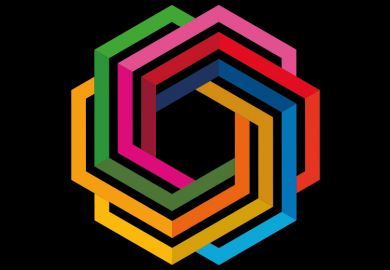This ranking focuses on universities’ research on hunger, their teaching on food sustainability and their commitment to tackle food waste and address hunger among students and local communities. Hunger is defined as a severe lack of food, causing suffering or death.
View the methodology for the Impact Rankings 2023 to find out how these data are used in the overall ranking.
Metrics
Research related to hunger (27%)
- Proportion of research papers in the top 10 per cent of journals as defined by Citescore (10%)
- Field-weighted citation index of papers (10%)
- Number of publications (7%)
This focuses on research that is relevant to hunger. The field-weighted citation index is a subject-normalised score of the citation performance of publications.
The data are provided by Elsevier’s Scopus dataset, based on a query of keywords associated with SDG 2 (zero hunger) and supplemented by additional publications identified by artificial intelligence. The data include all indexed publications between 2017 and 2021 and are normalised across the range using Z-scoring.
Campus food waste (15.4%)
- Campus food waste tracking (7.7%)
- Campus food waste per person (7.7%)
The first indicator confirms whether a university measures the amount of food waste generated from food served within the institution. Institutions are given a higher score for the first indicator if the amount of food waste is measured across the whole university. The second indicator is based on data on the total amount of food that is discarded or left uneaten by all catering services on campus and the full-time equivalent campus population in the 2021 academic year. However, these values will only be scored where universities have indicated that they are measuring food waste.
The evidence for these indicators was provided directly by universities and was normalised.
Student hunger (19.2%)
- Programme on student food insecurity (4.8%)
- Interventions to target hunger among students and staff – for example, provide access to food banks (4.8%)
- Sustainable food choices for all on campus, including vegetarian and vegan food (4.8%)
- Healthy and affordable food choices for all on campus (4.8%)
Universities have a responsibility to ensure that their students have access to nutritious, affordable food. The evidence was provided directly by universities, evaluated and scored by THE and not normalised.
Proportion of graduates in agriculture and aquaculture, including sustainability aspects (19.2%)
This metric measures the proportion of graduates who receive a degree associated with any aspect of food sustainability within an agricultural or aquacultural course, out of the institution’s total number of graduates. It aims to capture whether a university actively teaches food sustainability within undergraduate and postgraduate agriculture and aquaculture courses.
The data were provided directly by universities and normalised across the range using Z-scoring.
National hunger (19.2%)
- Provide food security and sustainable agriculture and aquaculture knowledge, skills or technology to local farmers and food producers (4.8%)
- Events for local farmers and food producers to connect and transfer knowledge (4.8%)
- Access to university facilities to local farmers and food producers to improve sustainable farming practices (4.8%)
- Prioritise purchase of products from local, sustainable sources (4.8%)
These indicators measure a university’s effort to address hunger at a national level. Hunger is defined as a severe lack of food, causing suffering or death.
The evidence was provided directly by universities, evaluated and scored by THE and not normalised.
Evidence
When we ask about policies and initiatives – for example, the existence of mentoring programmes – our metrics require universities to provide the evidence to support their claims. In these cases, we give credit for the evidence, and for the evidence being public. These metrics are not usually size normalised.
Evidence is evaluated against a set of criteria, and decisions are cross-validated where there is uncertainty. Evidence need not be exhaustive – we are looking for examples that demonstrate best practice at the institutions concerned.
Time frame
In general, the data used refer to the closest academic year to January to December 2021. The date range for each metric is specified in the full methodology document.
Exclusions
The ranking is open to any university that teaches at either undergraduate or postgraduate level. Although research activities form part of the methodology, there is no minimum research requirement for participation.
THE reserves the right to exclude universities that it believes have falsified data, or are no longer in good standing.
Data collection
Institutions provide and sign off their institutional data for use in the rankings. On the rare occasions when a particular data point is not provided, we enter a value of zero.
View the full methodology for the THE Impact Rankings 2023 here.
The THE Impact Rankings 2023 will be published at 11:30am BST on 1 June.
Register to continue
Why register?
- Registration is free and only takes a moment
- Once registered, you can read 3 articles a month
- Sign up for our newsletter
Subscribe
Or subscribe for unlimited access to:
- Unlimited access to news, views, insights & reviews
- Digital editions
- Digital access to THE’s university and college rankings analysis
Already registered or a current subscriber? Login



